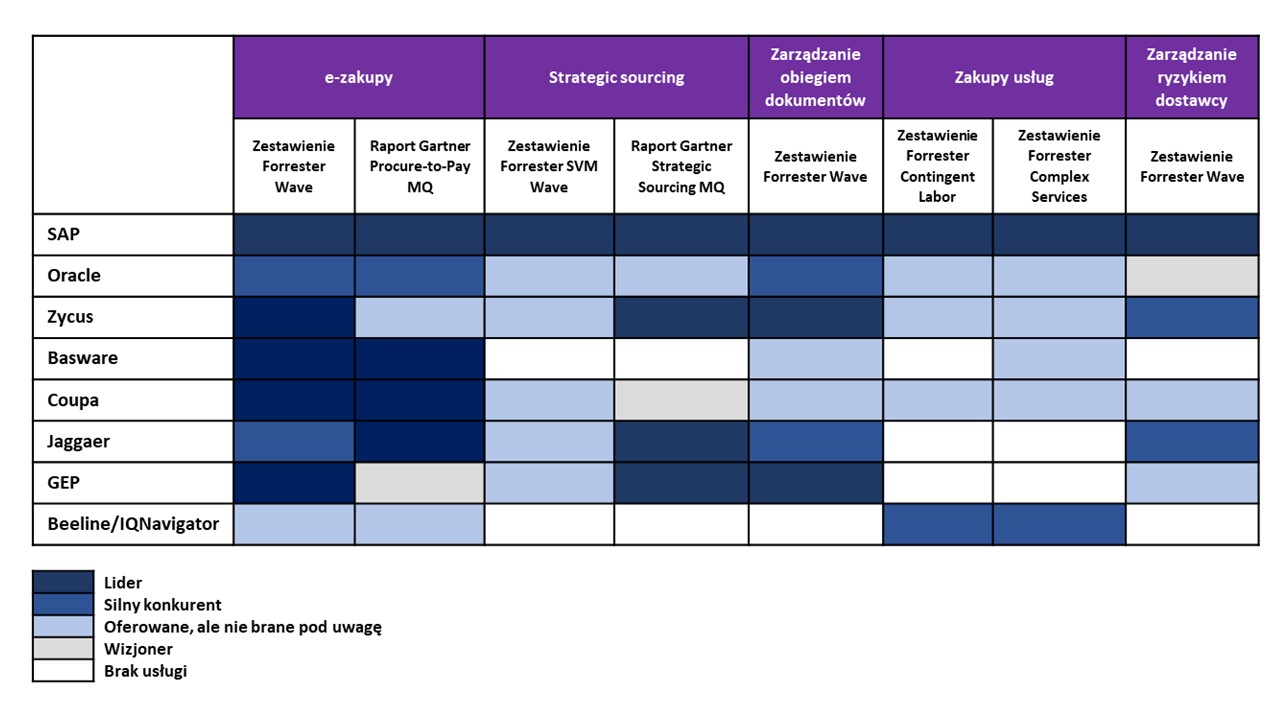In today's economy, many organizations are "digitizing" the way they do business. This includes, among others: on implementing systems that analyze data sets in order to study customer behavior patterns, or improving operational processes through the so-called Internet of Things.
However, in the quest to build a "digital" business, procurement is often overlooked, despite the fact that it connects to many functions, thus playing a key role in digitalization. IT directors who do not realize the role of procurement and cannot optimize it put their organizations at risk. Let's find out why.
On the one hand, ineffective management of purchases and expenses can turn out to be very expensive. The lack of a unified and consistent system across the enterprise may result in many purchases being made from non-contractual or ad hoc sources, resulting in volume discounts not being granted at all. Moreover, the use of spreadsheets, text documents or paper forms significantly increases the time of the entire purchasing process and may also lead to errors and even more wasted time.
On the other hand, an optimized purchasing system can bring significant benefits. Standardized purchasing practices can guarantee the lowest prices from suppliers who provide their best products and services. Centralized purchasing management eliminates burdensome formalities and duplication of tasks, reduces ad hoc expenses to a minimum and allows you to fully control them. It can also ensure that all stakeholders, including production, marketing, sales, legal, are involved in procurement activities at every stage.
With so much at stake, decisions about which software will be best to support the purchasing process should be made very carefully by people holding managerial positions, including IT directors. Most importantly, such decisions should not be about choosing the easiest solution, as is done when simply modernizing the modules currently in use, but should focus on finding the best solution that will bring the greatest benefits to the organization.
STRATEGIC PURCHASING PLATFORM
Which shopping platform should you choose? A strategic purchasing platform must be both comprehensive and unified, covering the entire process from purchasing planning through supplier selection to payment settlement and cash flow management. Without a comprehensive system in place, a supplier contract may be negotiated, but it will take weeks to get it to the legal department for approval. Additionally, a common mistake is a situation in which business users do not fully use the negotiated terms when ordering due to the lack of integration with the purchasing system. Manually monitoring contractual provisions with suppliers in everyday work, where everything is often required yesterday, usually ends in failure. As a result, the company loses time and savings.
A strategic purchasing platform should automatically implement the new supplier agreement throughout the company. Thanks to this, the favorable conditions resulting from the new contract will come into force immediately. Category owners will not have to create the fiftieth table in Excel, confirming savings and deviations from planned assumptions and explaining why this happened. They will be able to devote their time to creating added value in the company.
CLOUD SHOPPING
Over the last decade, the cloud has become an ideal platform for many applications, including those related to shopping. Cloud platforms provide high levels of availability, performance, stability and scalability. Additionally, these solutions are associated with lower total ownership costs, high SLA levels and data security.
Cloud-based software can be designed with scalability in mind. You can increase capacity, implement additional functionalities, and adapt the system to changes in the organization relatively quickly and at low costs.
Another benefit of the cloud cannot be ignored: when organizations use cloud services, employees do not have to perform time-consuming IT tasks, which allows them to focus on adding value to the company.
Examples of end-to-end cloud purchasing platforms*:

CONCLUSIONS
In the age of digital business, IT leaders should strive to drive change and increase efficiency in all areas of their company, including procurement. When looking for a strategic purchasing system, leaders should look for a cloud-based platform that is both comprehensive and unified, covering the entire process from purchasing planning to supplier selection to payment settlement and cash flow management. They should also remember that perhaps the most important thing about any platform is that it will be used constantly - so the platform should include an intuitive, customizable user interface with the ability to operate from a mobile phone or tablet. Enterprise IT teams with this knowledge will be able to support procurement areas in identifying the right cloud procurement platform to drive digital transformation.
*Source:
Forrester –The Forrester Wave: eProcurement, Q2 2017 –May 2017; Gartner –Magic Quadrant for Strategic Sourcing Application Suites –Aug 2018
Forrester –The Forrester Wave: SVM Tool Set, Q1 2013
Gartner – “Magic Quadrant for Procure-to-Pay Suites” – May 2018
Forrester –The Forrester Wave: Contract Life-Cycle Management, Q3 2016
Forrester –The Forrester Wave: Services Procurement Q1 2017 –Mar 2017
Forrester –The Forrester Wave: Supplier Risk And Performance Management Platforms, Q1 2018 –Feb 2018
